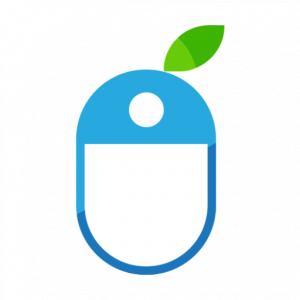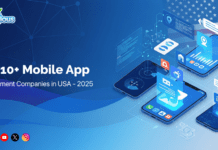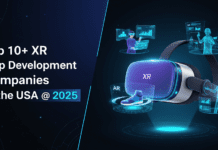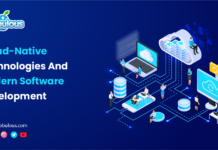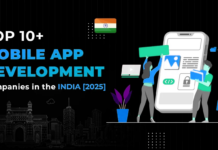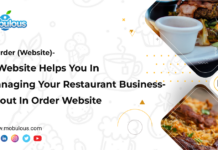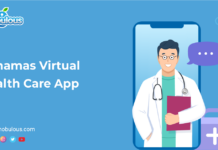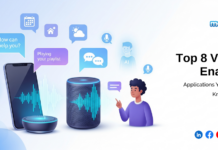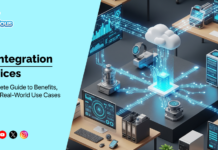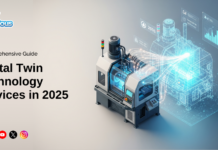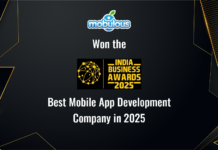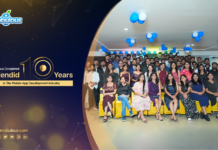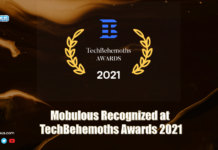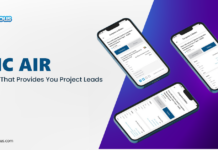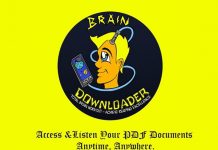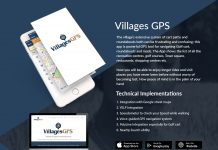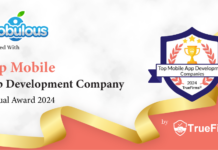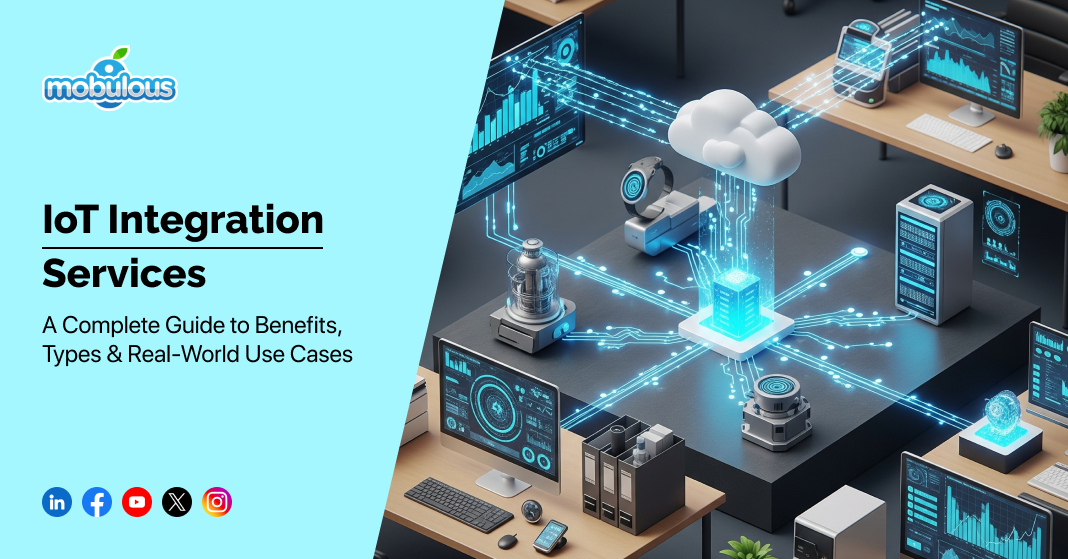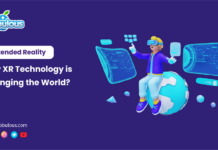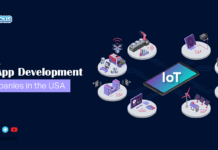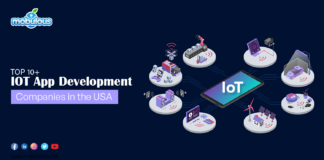What are IoT Integration Services?
IoT integration services connect smart devices, sensors, software, and networks by creating a system where everything talks to each other. This helps businesses automate processes and make smarter decisions by bringing together real-time data from different sources. That data can be analyzed and used to improve operations, cut costs, and boost performance.
By integrating with existing IT systems, IoT becomes far more useful. It stops being just a bunch of gadgets and turns into a real-time, data-driven engine. Businesses can track equipment, control environments, and trigger actions automatically. The result is better control, more insight, and fewer manual tasks. That’s the core value of IoT integration services.
Looking to build custom IoT solutions? Check out an IoT app development company for end-to-end development and integration expertise.
Benefits of IoT Integration Services
1. Cost Reduction
IoT integration services help reduce expenses across the board. Devices can monitor usage, energy, and wear in real time, helping prevent waste and unnecessary repairs. Automation cuts labor costs by handling tasks without human input. Over time, businesses spend less on operations and maintenance. The savings are steady and significant.
2. Real-Time Analytics
Integrated devices provide constant data streams. These streams are analyzed instantly, giving companies the power to react fast. For example, a spike in temperature or a drop in machine performance can trigger alerts. Problems are caught early. Real-time insights lead to smarter, faster decisions with less risk and better timing.
3. Predictive Maintenance
Sensors track wear and usage patterns. When something looks off, systems raise a flag. That means maintenance can be scheduled before breakdowns happen. Downtime is reduced, and expensive emergency fixes are avoided, extending equipment life. Predictive maintenance saves time, money, and headaches by stopping problems before they grow.
4. Improved Efficiency
Connected systems talk to each other automatically. That removes bottlenecks and cuts delays. Data flows in real time, so responses are faster. Machines, software, and staff all stay in sync, improving workflow and reducing waste. It’s like tuning a machine until it runs at peak performance every single day.
5. Remote Asset Monitoring
With IoT integration services, physical presence isn’t always needed. Devices in the field can report status, send alerts, or adjust performance from afar. This is ideal for businesses with widespread assets, including farms, factories, and fleets. Monitoring becomes constant, accurate, and convenient. No more flying blind or reacting too late.
6. Enhanced Business Opportunities
Data isn’t just for fixing problems. It opens doors, too. IoT insights help businesses create new products or services. Personalized offerings, subscription models, and smart features all become possible. Integration lets companies adapt faster and stay ahead of trends. That edge leads to innovation and more revenue streams.
Ready to unlock these benefits for your business?
Explore the list of the Top 10+ IoT App Development Companies in USA @ 2024 to find the right partner.
Types of IoT Integration Services
1. Connectivity & Communication Platforms
These platforms handle how devices talk to each other. They manage networks like Wi-Fi, cellular, or Bluetooth. That ensures reliable data transmission at all times. Communication must be fast and secure. These platforms make that happen. Without them, devices are just isolated tools. With them, they’re part of a living system.
2. Device Management Platforms
Once devices are online, they still need attention. Device management platforms keep them updated and healthy. They push firmware updates, fix errors, and track performance, which ensures devices stay useful and safe. Managing hundreds or thousands of devices manually isn’t realistic. These platforms automate the tough stuff.
3. Application Enablement Platforms
Data is only useful if it’s applied. These platforms help developers build apps that use IoT data. They offer tools, templates, and workflows. That speeds up development and keeps things organized. They also allow custom features. These platforms are the bridge between raw sensor data and business action.
4. Analytics Platforms
Analytics platforms turn data into insights. They process huge amounts of input and highlight what matters. Visual dashboards, alerts, and reports help teams make sense of the noise. Some platforms even include AI tools. Those tools can predict trends or suggest actions. Analytics gives the big picture in real time.
Platforms of IoT Integration Services
1. Oracle IoT
Oracle IoT is built for enterprise use. It connects devices and runs advanced analytics. It works well with Oracle’s other tools, like supply chain and ERP software. That makes it easy to fit into existing business systems. The platform supports automation, real-time tracking, and predictive alerts. It’s fast, secure, and scalable.
2. AWS IoT
Amazon’s platform is flexible and powerful. It supports millions of devices across different use cases. From startups to global corporations, AWS IoT fits many needs. It includes tools for device management, analytics, and machine learning. It also supports a wide range of device types. That makes it highly adaptable.
3. Microsoft Azure
Azure IoT is great for businesses already using Microsoft tools. It connects easily with services like Power BI and Azure Functions. It also has strong security features and hybrid deployment options. That means you can run systems in the cloud or on-site. Azure is known for being developer-friendly and versatile.
4. IBM Watson IoT
Watson IoT is designed for deep analysis. It combines data from devices with IBM’s AI tools, which allows for smart automation and fast decision-making. It’s especially good for manufacturing and energy. Watson learns over time, so its insights get better. The focus here is on intelligent, adaptive operations.
5. Bosch IoT Suite
Bosch focuses on industrial solutions. Its suite is designed for manufacturing, automotive, and energy. It handles device updates, secure data transfer, and real-time monitoring. The platform also supports edge computing. That means devices can process data locally before sending it to the cloud. This saves time and bandwidth.
Use Cases of IoT Integration Services
1. Smart Cities
Cities are using IoT to improve daily life. Sensors manage traffic, control lights, and monitor pollution. Data helps reduce congestion and improve safety. Waste collection is optimized. Emergency services get faster alerts. The result is a more efficient, responsive city. Integration ties all systems together for maximum impact.
2. Manufacturing
Factories rely on precision. IoT integration services improve that precision. Machines track performance, alert for maintenance, and adjust automatically. Production lines run smoother and with fewer stops. Energy use is optimized. Quality control is more consistent. Integration helps manufacturers cut costs while improving output and reliability.
3. Healthcare
Hospitals need fast, accurate information. IoT delivers that. Wearables track patient vitals in real time. Medical devices send alerts when readings change. Supplies can be monitored automatically. Doctors and nurses respond faster with better data. Integration connects all the dots, improving care and reducing errors.
4. Agriculture
Farming is now high-tech. Sensors in soil track moisture and nutrients. Drones monitor crops. Livestock wear GPS trackers. Integration brings all that data to one place. Farmers know exactly when to water, fertilize, or harvest. Yields go up. Waste goes down. Smart agriculture is efficient and sustainable.
5. Retail
Retailers use IoT to improve customer experience and operations. Smart shelves track inventory in real time. Sensors analyze customer movement in stores. Data drives targeted marketing and better layouts. Integrated systems help predict demand and prevent stockouts. The shopping experience becomes smoother and more personalized.
How to Choose the Right IoT Integration Service
1. Understand Business Needs
Start with your goals. What do you want from IoT integration services? Maybe it’s real-time tracking or automation. Be specific. This helps narrow your choices. If the provider can’t support your goals, it’s a bad fit. Understanding your needs keeps the process focused. It also avoids wasting time and money on the wrong solution.
2. Evaluate Provider Expertise
Experience matters. Look at what the provider has done before. Do they have work in your industry? Check their client list. Review case studies. Ask how they handle tough challenges. A team with strong experience will guide you better. If they speak in vague terms, that’s a warning sign. You need clear, confident answers.
3. Assess Scalability and Flexibility
Things change. Your IoT setup today won’t look the same in two years. That’s why flexibility is key. Can the service handle more devices later? Can it adjust when your needs shift? Choose a system that grows with you. A rigid platform will only slow you down. The right fit should make scaling smooth and simple.
4. Prioritize Security
Security is critical. Every connected device is a new risk. Ask how the provider handles threats. Look for strong encryption, routine updates, and fast response plans. Don’t settle for vague answers. A weak security setup could cost you big. Make sure the team treats security as a top priority, not an afterthought.
Future Trends in IoT Integration Services
1. 5G-Powered IoT
5G makes things faster. Devices can talk to each other in real time, which means decisions can be made instantly. It’s a game changer for logistics, factories, and even remote surgeries. As 5G spreads, IoT integration services will become even more powerful. Speed and lower delay open new doors for innovation.
2. Edge Computing Rise
Edge computing keeps data close. Instead of sending everything to the cloud, it processes data on the device itself. That saves time and reduces delays. It’s perfect for situations where speed matters. Expect to see more edge-based solutions in the future. They’ll become essential for responsive, high-speed IoT systems.
3. AIoT Convergence
AI and IoT are coming together, called AIoT. It lets machines learn from data and act without help. The result is smarter systems. They can fix issues before they happen or make fast decisions. AIoT brings intelligence to the edge. It’s changing how businesses use connected devices.
4. Digital Twin Technology
A digital twin is a virtual copy of something real. It could be a machine, a building, or an entire city. IoT devices feed it data in real time, which lets teams test ideas and spot problems early. It’s like having a practice version of your business. Digital twins are becoming key to smarter operations.
5. Blockchain for Security
Blockchain builds trust. It creates secure records that can’t be changed, which is perfect for IoT systems with lots of data. It adds a layer of protection and traceability. As data security becomes more important, blockchain will show up more in IoT integration services. It’s not just hype. It’s a real tool.
6. Smart Cities and Healthcare
Cities and hospitals are next. IoT is already helping with traffic flow, energy use, and patient monitoring. These systems need to handle lots of data fast. Integration services must be reliable and strong. As more governments and healthcare providers invest in IoT, the demand for smarter integration will grow fast.
Explore how IoT, 5G, blockchain, and AI are shaping the future of enterprise technology in the detailed blog on Enterprise Mobile App Development Trends (IoT, Blockchain, 5G).
Conclusion
Choosing the right IoT integration service isn’t easy. You have to think about your needs, growth plans, and data safety. Then, match those to the right provider. Trends like AI, 5G, and edge computing are shaping the future fast. The smart move is picking a partner who can keep up. Make the choice count.
FAQs – IoT Integration Services
Q1. What are IoT integrations?
IoT integration connects smart devices, software, and systems. It allows them to talk and work together. The goal is smooth data flow and automation. This setup helps businesses save time and make better decisions. IoT integration services make all parts of the system function like a single smart unit.
Q2. What are IoT services?
IoT services include everything from planning to running connected devices. They help collect, process, and use data. These services often cover setup, monitoring, support, and security. Businesses use them to streamline operations and find insights. IoT services turn device data into useful action and long-term value.
Q3. What is the architecture of IoT integration?
IoT architecture is how the system is built. It includes devices, networks, processing units, and apps. Data moves through these layers for analysis and action. Each part plays a role. Together, they let devices talk and react. A strong architecture is the backbone of a working IoT setup.
Q4. What are the 4 main components of IoT integration?
There are four key parts. Devices collect data. Networks send it. Data processors sort and analyze it. Interfaces let people use and understand the results. All four work together. Without one, the system fails. These components create the flow of data from the physical world to digital action.
Q5. What is the full form of IoT?
IoT stands for Internet of Things. It’s a system where physical devices are connected to the internet. These devices collect and share data. This connection helps automate tasks and monitor performance. IoT is used in homes, cities, factories, and beyond. It’s changing how we live and work.
